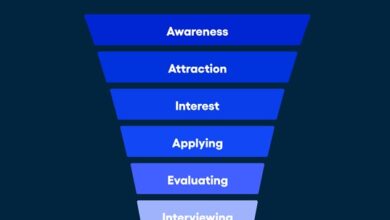What is a customer loyalty KPI?
Here we will elaborate you the Customer loyalty KPIs with Examples and Customer retention rate.
Loyalty KPIs are those that help us take the pulse of your loyalty programs and will provide you with information for your future optimization efforts.
While it is important to note that the correct measurement of customer loyalty KPIs varies by industry and the buying cycle, the key areas of focus remain the same.
There are several loyalty KPIs to measure the success of your program. This data will influence your future strategies to achieve customer satisfaction.
Recall that the loyalty of the client and can be defined as the propensity of a customer to repeat the purchase of a good or service of the same brand. The benefits of a loyal customer base include greater visibility into future revenue and maximizing the customer’s lifetime value .
Examples of customer loyalty KPIs
While each brand has unique measurement goals and needs, these four customer-centric KPIs are a great starting point for building your customer loyalty strategy .
1-Rewards redemption rate
The redemption rate, which provides information on whether customers are actively participating in the loyalty program, can help determine who the most enthusiastic members are and indicate which types of points and rewards are redeemed more than others.
The redemption rates of your reward programs can be influenced by a number of factors, including the value customers perceive from your program, the ease of earning and spending points, expiration dates, and the variety of rewards.
A low redemption rate can be an indicator that customers don’t find your offers valuable or personal enough. Lack of knowledge can also be for a low rate.
To calculate the redemption of rewards, you will need to know the total number of points that have been spent, as well as the total number of points issued during the life of your program, including the points that have expired. The formula to determine the reward redemption rate is as follows
Redemption rate = Total points spent / Total points issued
2-Customer retention rate
Another of the loyalty KPIs is the customer retention rate, a fundamental metric for any business. The customer retention can help us determine the effectiveness of your marketing strategies (such as loyalty programs) when attracting new customers versus those who already have.
A high retention rate means customers are staying, and a low retention rate may indicate that a negative customer experience is driving them away.
When you use retention data to improve the customer experience , everyone wins, as marketing to existing customers is far less expensive than attracting new ones. In fact, the cost of acquiring a new customer is five times the cost of retaining one.
To determine your retention rate for a given period of time, you will need to know the number of clients you had at the beginning of the period, the number of new clients acquired during the period, and the number of clients you had at the end of the period. You can then apply those figures to the following formula:
Customer retention ratio = (End Customers – New Customers) / Initial Customers x 100
3-Buy repeat rate
The goal of any loyalty program is for customers to buy again and again. The repeat purchase rate is another loyalty KPI that allows you to know the percentage of repeat buyers among your customer base.
Loyal customers spend more than new customers, and they are often the best advocates for your brand , as the more they buy, the more likely they are to recommend your business to other people.
As with the other customer loyalty KPIs analyzed, when the repeat purchase rate is low, marketers must determine what is keeping customers from coming back, whether it is something related to the experience (i.e. , a negative experience in the store) or with the product (that is, a disappointment in the quality of the purchase).
To determine your repeat purchase rate, you need to know the total number of buyer customers, as well as the number of customers who have bought two or more times.
Buy repeat rate = Repeat customers / total buyer customers
4-Customer lifetime value
The value of the customer life cycle is another of the essential loyalty KPIs to measure the success of your loyalty program. This KPI not only takes into account the value that your customers have already brought to your brand, but also predicts the value in the future.
Knowing which customers have the potential to be the most valuable to your business will allow you to increase all other KPIs. By targeting the most committed members of your loyalty program, you will ensure that your redemption and repeat purchase rates are higher, leading to more loyal customers, more brand advocates, and higher performance. from the investment.
Determining the lifetime value of the customer is a bit more complex than other KPIs. The calculation takes into account both income and expenses to date as well as anticipated future income and costs. By adding revenue spent to date plus anticipated future revenue, and subtracting current and future acquisition and reimbursement costs, the customer‘s lifetime value can be determined.
The success of your customer loyalty program lies in the experiences of your customers, and these metrics are a way to measure the opinion about your brand and the loyalty program offers.
5-Net Promoter Score
The Net Promoter Score (NPS) corresponds to the proportion of customers likely to recommend or not to purchase a product, service or brand.
Through a questionnaire, the survey places the probability of promoting a brand on a scale of 1 to 10.
The most satisfied and loyal customers who answer 9 or 10 are potential “promoters”, while those who mark a number less than or equal to 6 may become detractors and require special proactive attention to solve their problems before an effect takes place. negative that runs like a snowball.
Between these two categories are liabilities, which correspond to neutral customers. The satisfaction is present, but the enthusiasm of the promoters has not yet been reached. v
Liabilities are the most vulnerable to competition and are also difficult to convert.
How is the NPS calculated?
Using a very simple formula: the final score, out of 100, is obtained by subtracting the percentage of promoters from that of detractors.
NPS =% of promoters -% of detractors
A score close to +100 (all clients are promoters) will always be better than one of -100 (all clients are detractors).
A score of 50 or more is considered good.
conclusion
By tracking these customer loyalty KPIs and other satisfaction indicators, brands will have a better chance of maintaining an active and enthusiastic community.




